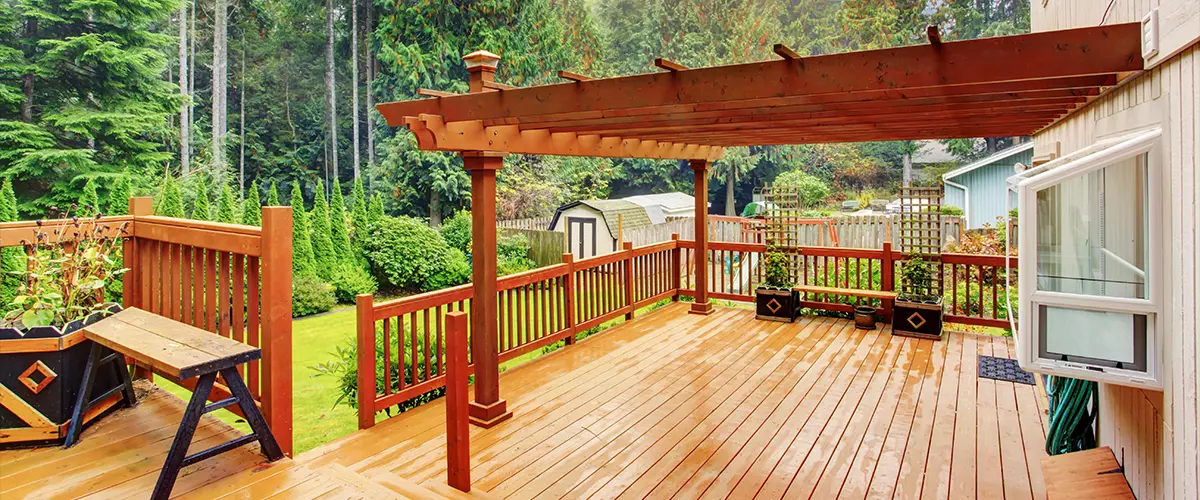Expanding Your Outdoor Space: Tips for a Perfect Deck Extension

A deck extension is a fantastic way to enhance your outdoor living space, providing more room for relaxation, entertainment, and enjoyment of the great outdoors. Whether you need additional space for a growing family, want to create separate areas for dining and lounging, or simply wish to maximize your outdoor area, extending your deck can offer the perfect solution.
Planning is crucial: Determine the purpose, design, and layout of the extension. Choose materials that match your existing deck and set a realistic budget, considering costs for materials, labor, and permits. Check local building regulations to ensure compliance.
Building involves several steps: Start with a stable foundation using concrete footings or deck blocks. Construct the frame with pressure-treated lumber, including the ledger board, beams, joists, and posts. Install the decking material, leaving gaps for drainage, and secure with screws or hidden fasteners. Add railings and stairs for safety if needed, and finish with features like built-in seating, planters, or lighting.
Maintenance is essential for longevity: Clean the deck regularly, seal or stain as needed to protect against moisture and UV damage, and inspect for wear or loose hardware.
By following these steps, you can create a beautiful and functional deck extension that enhances your outdoor living space for years to come.
Planning Your Deck Extension
Before you begin your deck extension, careful planning is essential. Here are some key considerations:
- Purpose: Determine the primary purpose of your deck extension. Will it be used for dining, lounging, hosting parties, or perhaps a combination of these activities? Knowing how you intend to use the space will help you design it more effectively.
- Design and Layout: Consider the existing design of your deck and how the extension will integrate with it. Ensure that the new section complements the existing structure and doesn’t look like an afterthought. Think about the flow of movement and how people will navigate between the areas.
- Materials: Choose materials that match or complement your existing deck. Common materials include wood, composite decking, and PVC. Each material has its pros and cons in terms of cost, durability, and maintenance, so choose what works best for your needs and budget.
- Budget: Set a realistic budget for your deck extension project. Consider costs for materials, labor, permits, and any additional features such as lighting, seating, or planters.
- Permits and Regulations: Check with your local building authority to find out if you need a permit for your deck extension. Ensure that your design complies with local building codes and regulations.
Building Your Deck Extension
Once you have a clear plan, it’s time to start building. Here are the steps involved:
- Foundation: The foundation is crucial for the stability of your deck extention. You may need to pour concrete footings or use deck blocks, depending on the size and height of your extension. Ensure the foundation is level and secure.
- Framing: Build the frame of your deck extension using pressure-treated lumber. This includes the ledger board (which attaches to your house), beams, joists, and posts. Make sure everything is properly aligned and secured with galvanized or stainless-steel hardware to prevent corrosion.
- Decking: Install the decking material of your choice. Lay the boards perpendicular to the joists, leaving a small gap between each board for drainage. Secure the boards with screws or hidden fasteners for a clean finish.
- Railing and Stairs: If your deck extension is elevated, you’ll need to install railings for safety. Choose a style that complements your deck design. If you need stairs, build them with sturdy materials and ensure they are properly anchored.
- Finishing Touches: Add any additional features that enhance the functionality and aesthetics of your deck extension. This could include built-in seating, planters, lighting, or outdoor furniture.
Maintenance and Care
To keep your deck extension looking great and performing well, regular maintenance is important:
- Cleaning: Clean your deck regularly to remove dirt, debris, and stains. Use a deck cleaner and a soft brush or pressure washer on a low setting.
- Sealing and Staining: Depending on the material, you may need to seal or stain your deck every few years to protect it from moisture and UV damage. Follow the manufacturer’s recommendations for the best results.
- Inspection: Periodically inspect your deck for signs of wear, damage, or loose hardware. Address any issues promptly to prevent further deterioration.
Conclusion
By following these guidelines and tips, you’ll be well on your way to creating a beautiful and functional deck extension that enhances your outdoor living space for years to come. Enjoy the process and the rewards of a well-planned and executed project!







